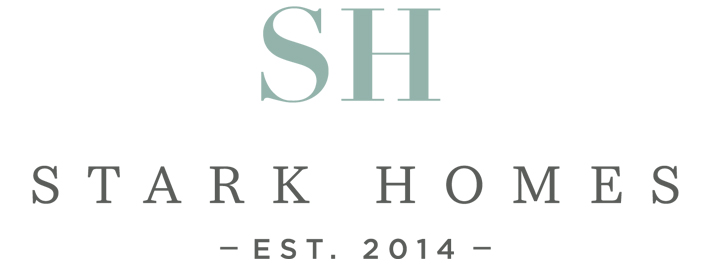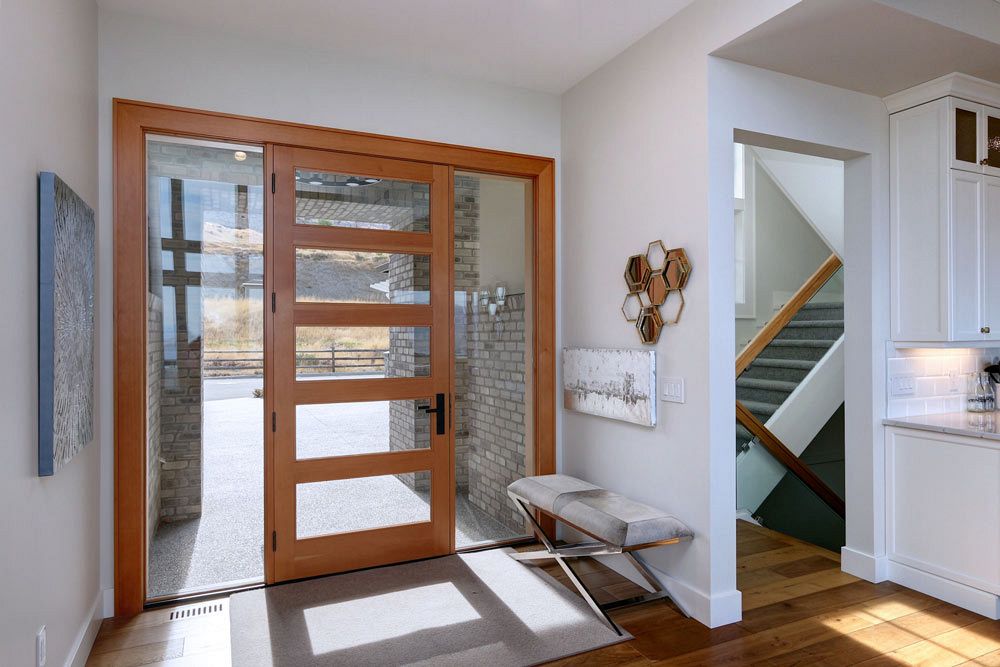Sustainable homes are energy efficient. They are purposeful in their consumption of energy and water, minimizing the use of non-renewable resources. Sustainable homes are also purposeful in design, using quality materials that have a lesser impact on the environment. In building custom homes, eco-friendly building practices can be taken into account from the start.
With a steady-growing interest in energy-efficient solutions, the trend for sustainable homes is here to stay. This practice is only going to become more innovative with time and we can’t wait to see what the future holds. Here are some popular innovations in sustainable building practices.
Maximizing efficiency
Eco-friendly flooring
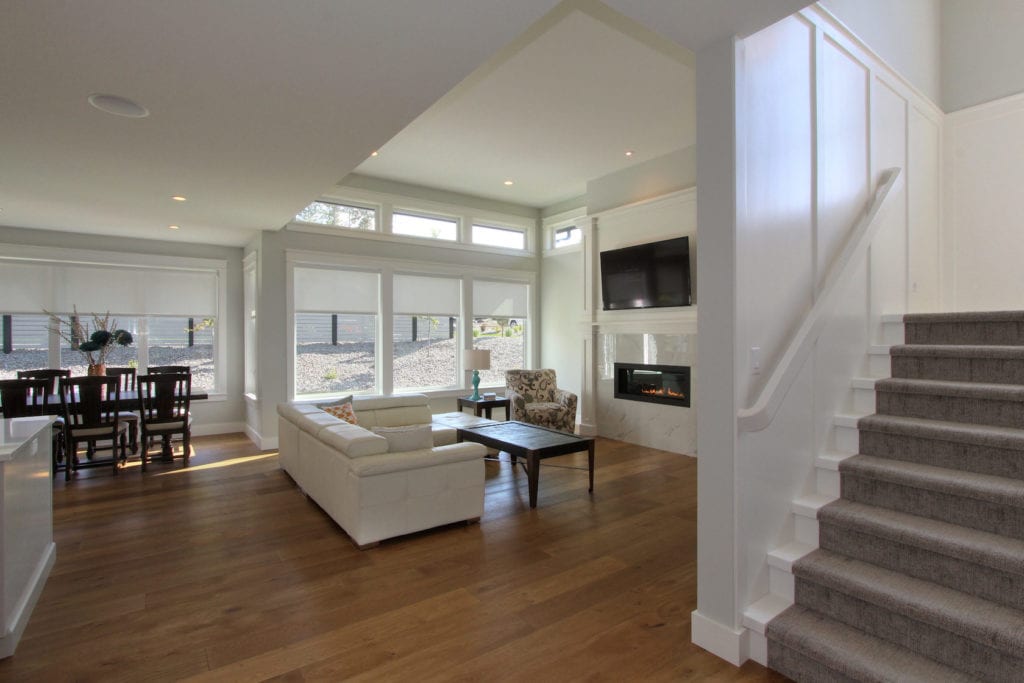
Where flooring was once a major source of pollution in the building industry, it’s now easier than ever to find eco-friendly flooring options. Sustainability starts in the manufacturing process, and considers the impact on the environment and renewable nature of the materials.
Recycled & reclaimed
Recycled flooring uses existing materials that may otherwise have been discarded, such as recycled carpet tiles and reclaimed or salvaged woods. Natural imperfections and rustic textures can add character to your home design, while keeping used materials out of the landfill.
Earth-friendly hardwood
New hardwood floors can also be environmentally friendly if the source and manufacturing process are carefully considered. Oak is a popular hardwood choice, with forest-protection programs in place to replant trees that are cut down. It has a lower carbon footprint and releases fewer toxic emissions in its manufacturing.
Rapidly-renewable bamboo
Bamboo flooring is an environmentally-friendly hardwood alternative. Bamboo can grow to maturity in as little as three years, making it one of the most highly-renewable flooring materials available. With its natural striations, bamboo can add a contemporary look to any interior design. Choosing quality brands and being cautious of the source remains important, as low-quality options that are shipped over long distances can offset the environmental benefits.
Sustainably-harvested cork
Cork flooring is another environmentally-friendly flooring alternative made with all natural materials. Harvesting cork does not cause damage to trees and produces minimal excess waste. Cork is also great at holding in heat due to the cellular structure of the material. It maintains the room temperature and evenly disperses heat. This is great for cold Okanagan winters and puts an end to cold floors in the morning.
Radiant Floor Heating
Radiant hydronic heat, also known as in-floor heat, can be installed prior to the flooring in an energy-efficient home. Water-heated tubes are installed beneath the flooring, allowing heat to rise through the floors and create a more constant room temperature. Radiant heat is typically more efficient than forced air due to the elimination of duct losses, and can reduce heating costs by 25-50%. This technology can even be used to heat driveways and sidewalks for melting snow and ice.
Electric radiant heat is another in-floor alternative, using electric coils rather than water-heated tubes. Heat-conducting plastic mats contain coils that are warmed by electricity, which in turn heats the room from the ground up. This heating works best in smaller spaces or single rooms, and is often used beneath bathroom tile flooring.
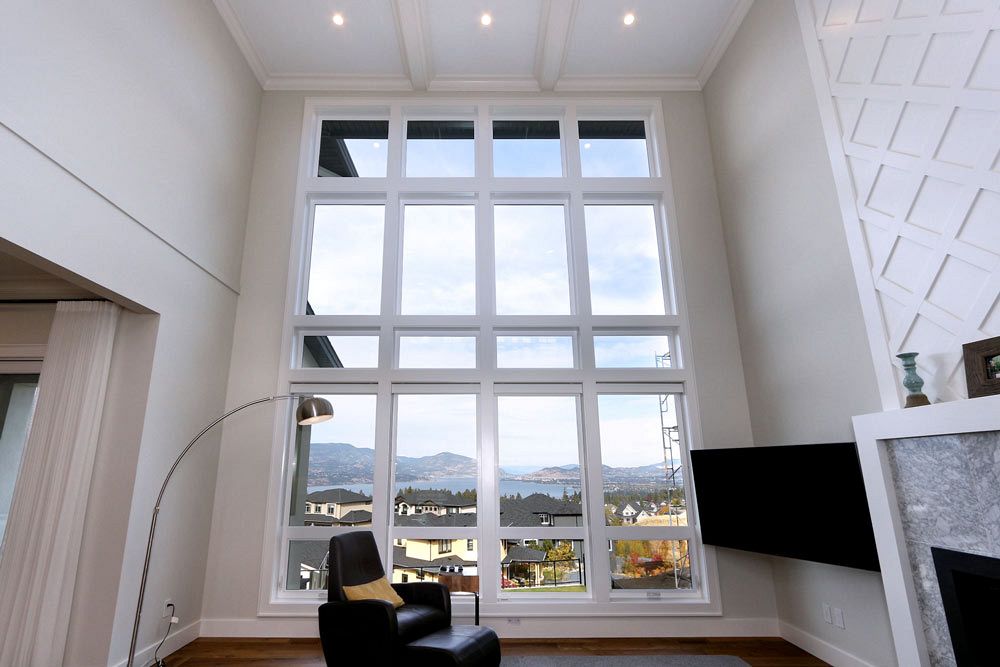
Energy Efficient Windows
A recent design trend that homeowners are seeking to implement is a light and open atmosphere. A popular way to achieve this is to incorporate large windows throughout the home.
Windows are great for creating the illusion of a larger space and create a more open feeling in the home; however, windows can be a significant source of energy loss. Choosing high-efficiency windows can save you an average of 45% on your energy bill.
During cooler months, homes lose a lot of window heat through radiation, conduction, convection and air leakage. To improve energy efficiency, installing double-glazed windows is a great sustainable building practice.
Gas & Induction Stoves
Like the majority of home appliances, stoves are a significant source of energy consumption. Luckily, inefficient models can now be replaced with more sustainable, eco-friendly options.
One innovative alternative is the induction stovetop, which creates heat through an electromagnetic field rather electric coil heat. There are numerous benefits to induction cooktops that make this an enticing purchase for a new home, including faster and more even cooking. The U.S. Department of Energy has estimated electric coil efficiency as approximately 74-77% and induction at 84%.
Gas stovetops are often considered to be the most luxurious stovetops available. Chosen by chefs for their finer temperature control and versatility with cookware, gas ranges are also simple to clean, durable and require little maintenance. Because gas cooktops heat with an open flame, they have the potential to lose heat quickly to the air. For this reason, gas stovetops can sometimes be the least energy-efficient.
It’s important to note that not all induction, electric coil, and gas stovetops are created equal. This makes comparisons in efficiency difficult. All of these methods of heating have improved in efficiency over the years, making some gas models more efficient than induction, for example. It is also important to consider the entire system when looking at sustainability, from energy source to kitchen, and not just what happens at the stove top. In terms of total energy consumption, gas ranges are often the most eco-friendly.
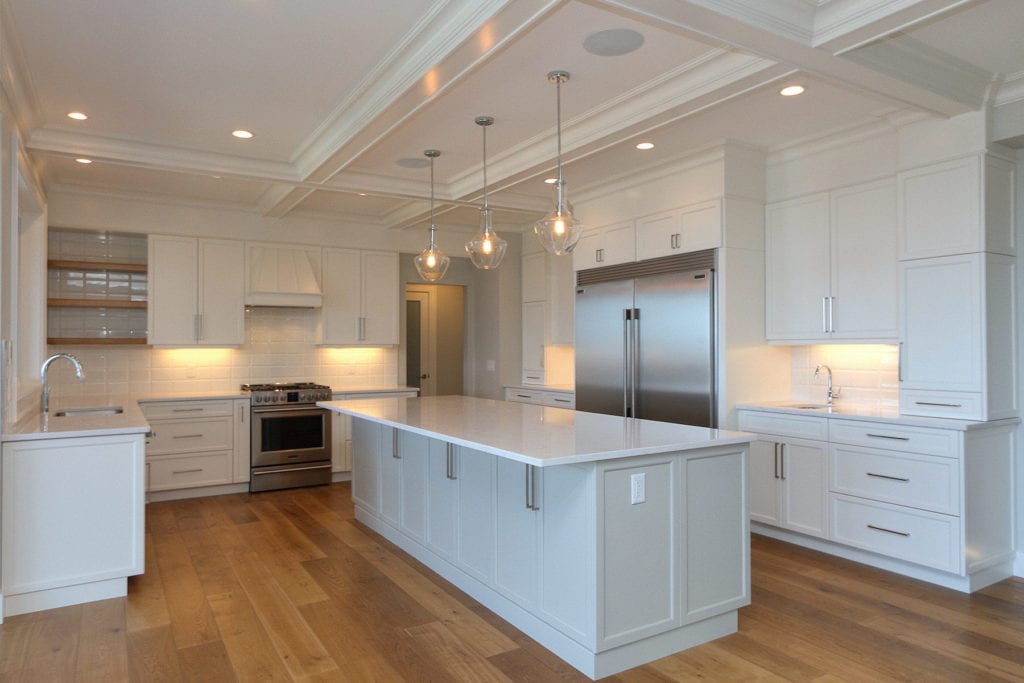
ENERGY STAR Labels
ENERGY STAR is the recognized government-backed symbol that represents the mark for high-efficiency Canadian products. EnergyStar shares credible, unbiased information that consumers can use to make well-informed decisions on eco-friendly appliances.
Items with EnergyStar symbols are set with a minimum performance standard, making them a great choice when choosing appliances and products for your sustainable home.
Water Saving Designs
Low flush toilets
Like ENERGY STAR for appliances, WaterSense is the recognized label for products that are considered water-efficient. Choosing to install high-efficiency toilets in your home can significantly add to its sustainability. Traditional toilets use roughly 6 litres of water with each flush. By comparison, a low flush toilet limits water usage to approximately 4.5 litres. There are numerous low flush toilets available on the market, providing a variety of options for your sustainable home.
Eco-friendly washing
Washing machines have also come a long way in terms of energy efficiency. ENERGY STAR certified washers use about 25% less energy and 33% less water than regular washers, and most new models on the market take energy and water-savings into consideration.
Another factor to consider in eco-friendly washing is what’s being released back into the environment. Each time you wash your clothes in a washing machine, tiny particles escape the trap of regular filters. This releases microplastic and microfibres into the environment, sourced from the synthetic material in our sheets, clothing and towels. Installing a microfibre filter into your washing machine can trap these fibres and prevent them from being released, protecting the environment with each wash cycle.
Sustainability in Custom Homes
Building an energy-efficient home is now easier than ever. Growing innovation surrounding eco-friendly designs and building practices provides a variety of options to choose from. To make your home more energy efficient, consider implementing any of the above options. Through innovative design, efficient appliances and water-saving techniques, your home can be a sustainable haven in no time.
If you’re starting from the ground up and are considering a custom home build, we’d love to talk to you about sustainable options. With a passion for the entire home building process, we can work with you to create your green, dream home. Reach out today to get started.
